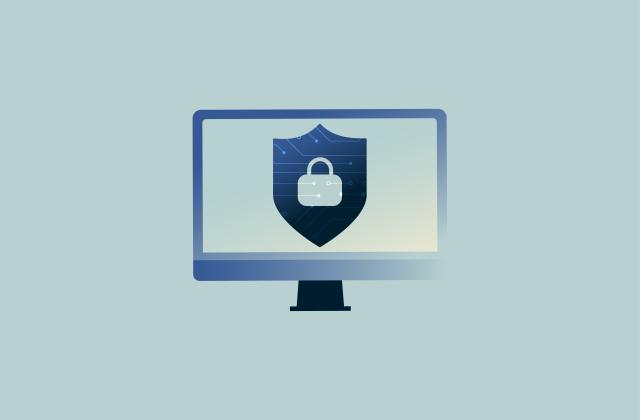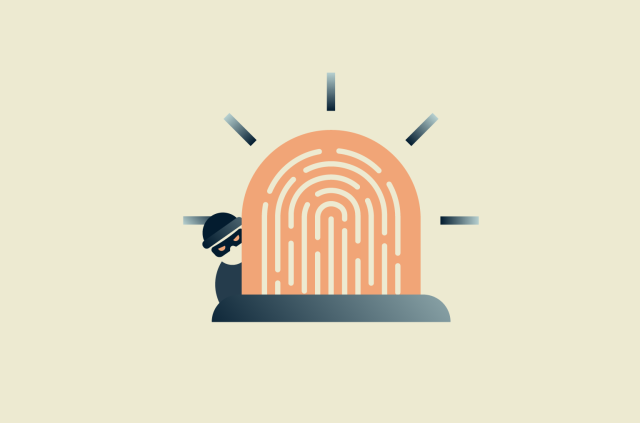Zero-trust architecture: What it is, how it works, and why it matters

The days of trusting anything just because it’s “inside the network” are over. Remote work, SaaS application vulnerabilities, and attackers using valid credentials have turned implicit trust into a liability.
Zero-trust architecture replaces implicit trust with continuous authentication: access is evaluated in real time based on risk, not location or credentials. It changes how access decisions are made based on real-world risk rather than assumptions.
This guide breaks down the core principles behind zero-trust architecture, how implementation works in practice, and what changes are required across your operations, tooling, and team culture.
Note: ExpressVPN focuses on consumer privacy tools, not enterprise frameworks like zero-trust architecture. We include this topic to help readers understand its role in the wider cybersecurity landscape.
What is zero-trust architecture?
Zero-trust architecture is a security model that assumes no user or device is inherently trusted and requires continuous verification to grant or maintain access to resources. Being on a VPN, at HQ, or on a known subnet isn’t enough; every request must prove it’s safe in real time.
Decisions are made dynamically, factoring in who’s requesting access, from which device, and whether the request aligns with expected behavior. A successful login doesn't grant broad access; each action is checked in real time, and access is limited to what's needed.
The concept gained momentum in the early 2010s and was formalized in 2020 in Special Publication 800-207 from the National Institute of Standards and Technology (NIST). It doesn’t prescribe specific tools; rather, it sets an expectation. There’s no implicit trust, no blanket access, and every connection is conditional.
The fundamental principle behind zero-trust architecture
Zero trust is built on a single rule: never trust, always verify. That applies to users, devices, applications, and services. No request is assumed safe, and every access attempt must earn its way in based on identity, device posture, behavior, and context.
It doesn’t matter if someone authenticated minutes ago; if their device becomes non-compliant or their behavior deviates from the norm, access is challenged or revoked immediately.
This approach starts with the assumption that the network might already be compromised. That mindset replaces static trust with continuous authentication and evaluation.
Implementing zero-trust architecture can’t prevent every breach, but it can help detect and contain intrusions early by limiting lateral movement and enforcing granular access controls.
How zero trust differs from traditional security models
Traditional security relied on a perimeter: keep threats out, and trust what’s inside. Firewalls, VPNs, and intrusion detection systems built the walls. Once inside, users often had broad, unchecked access.
That model no longer fits. Employees are often remote and international, apps live in the cloud, and attackers can use sophisticated phishing attacks to log in with valid credentials. The perimeter has dissolved.
In zero trust, security enforcement doesn’t sit at the network perimeter. It happens at the level of each user, device, and request. A user in the office gets the same scrutiny as someone logging in from a cafe. Access decisions are always based on risk, not location.
Key differences:
- No implicit trust based on location: The source doesn’t matter; each request starts from zero, regardless of where it comes from.
- Granular access replaces broad access: Users are granted only the access needed for their role and task.
- Continuous validation beats one-time login: Zero trust means examining every user action to catch anything that’s out of place.
- Microsegmentation stops lateral movement: Each system enforces access locally, preventing compromise from spreading across environments.

Why organizations are moving to zero trust
The risks of perimeter-based security
For years, companies relied on strong perimeters: VPNs, firewalls, and static rules designed to keep threats out. But under this model, a single stolen credential or insider threat can result in a threat actor moving laterally through the network, often undetected.
Perimeter defenses also bring their own risks. Exposed services like VPN gateways become targets, while assumptions of internal trust leave critical systems underprotected. Techniques like IP whitelisting were once seen as strong controls, but they’re easy to spoof or hijack.
Zero trust changes how the entire environment operates. Access controls become dynamic, visibility extends to every device and session, and security enforcement moves closer to the asset itself.
Remote work and cloud adoption
The old network perimeter wasn’t just weakened; it disappeared. Employees now work from airports, coffee shops, and home networks. Apps and data live across AWS, Google Cloud, Microsoft 365, and dozens of SaaS platforms.
In most architectures, cloud-to-cloud traffic bypasses traditional perimeter controls entirely, making network-based enforcement ineffective. And backhauling remote traffic (routing it through a central data center for inspection) creates bottlenecks that degrade the user experience.
Zero trust adapts to this new environment. Instead of enforcing security at the network boundary, it applies controls directly at the user, device, and application level. Every request is verified based on identity, device posture, and context, regardless of where it originates from.
Regulatory and compliance pressures
Government mandates are increasingly pushing organizations toward zero trust. In 2021, the U.S. government issued Executive Order 14028 on improving cybersecurity. The Office of Management and Budget followed with a formal Federal Zero Trust Strategy, directing all federal agencies to implement zero-trust principles across their systems. The Department of Defense also released its own roadmap to drive adoption at scale.
It’s not just in the public sector and in the U.S. International frameworks like the General Data Protection Regulation (GDPR) and the Payment Card Industry Data Security Standard (PCI-DSS) also demand tighter access control, stronger authentication, and comprehensive logging: principles that zero-trust architecture enforces by default.
From a compliance standpoint, zero-trust architecture offers cleaner audit trails, finer-grained access logs, and built-in controls like multi-factor authentication (MFA) and session revocation. It’s easier to prove you’re doing the right thing when your architecture already treats every access attempt as a risk to be evaluated.
Core principles behind zero-trust architecture

Assume breach
Zero trust operates under the assumption that breaches are inevitable. The goal isn’t to build an impenetrable perimeter; it’s to minimize the impact when that perimeter fails.
This mindset leads to several technical strategies:
- Microsegmentation: Networks are divided into tightly controlled segments. A compromise in one doesn’t spread laterally without crossing strict checkpoints.
- Trust zones: Critical systems are grouped into zones based on function and sensitivity, with policies tailored to each. Even within zones, access is restricted through microsegmentation.
- End-to-end encryption: Data is encrypted at rest and in transit, which ensures that even if intercepted, it’s unreadable.
- Real-time monitoring: Access attempts and behavioral signals are continuously inspected for signs of compromise.
- Automated response: If suspicious behavior is detected (like a device acting outside its baseline), systems can quarantine it or shut down access automatically.
Enforce least-privilege access
Users, devices, and services only get access to what they strictly need, and nothing more. This principle is applied in several ways:
- Granular permissions: Access is role-specific and tightly scoped. An HR user can access payroll but not customer records. A developer may reach staging but not production.
- Just-in-time (JIT) access: Temporary access is granted for specific tasks and revoked immediately after.
- Just-enough access (JEA): Permissions are limited to only the functionality required, like read-only rights instead of full write access.
Least privilege minimizes what attackers can reach, whether they’re external intruders or internal threat actors. And as roles evolve, access is regularly reviewed and automatically pruned; nothing remains open by default.
Continuously monitor and validate
Zero trust doesn’t grant long-term access based on a one-time check. Trust must be earned continuously, based on context, behavior, and system posture.
Key mechanisms include:
- Ongoing authentication: Risky or sensitive actions may trigger step-up verification, like re-authentication or MFA.
- Device posture checks: Access decisions are influenced by endpoint security status, so unpatched systems can lose access.
- Behavioral analytics: Systems flag anomalies like login attempts from unmanaged devices at unusual hours, large data exports from finance systems, or location-activity mismatches (e.g., two logins minutes apart from different continents).
- Centralized logging and visibility: Every decision is logged to support real-time alerting, post-event investigation, and compliance audits.
By treating trust as dynamic and conditional, zero trust gives organizations a live map of their environment and the tools to act fast when something deviates from the norm.
Zero-trust reference architectures
Several standards bodies and agencies have released reference models that illustrate how zero trust should work in practice. These frameworks don’t prescribe a single solution, but they do define the key components and how they interact.
Core components: The NIST model
One of the most widely cited models comes from NIST Special Publication 800-207. At the center of this architecture are three main elements:
- Policy engine (PE): Makes real-time access decisions based on identity, device posture, risk signals, and more.
- Policy administrator (PA): Carries out the decisions, adjusting access configurations as needed.
- Policy enforcement point (PEP): Acts as the gateway, allowing or denying each request before it reaches a protected resource.
All user and device access attempts must flow through these components. They’re fed by various systems (identity management, device security, and threat intelligence, for example), which give the policy engine the context it needs to decide who should be let in.
For example, when a user requests access to a SaaS dashboard, the policy engine evaluates their identity, device compliance, and behavior. If approved, the policy administrator pushes the configuration, and the enforcement point allows or denies access based on the policy.
Reference pillars: CISA and DoD models
Agencies like CISA and the US Department of Defense break zero trust into foundational control areas, commonly called pillars. These help organizations implement zero trust across systems and teams.
CISA’s five pillars
- Identity: Verify users and manage secure credentials.
- Devices: Ensure endpoints are authorized, patched, and compliant.
- Network: Segment traffic and enforce encryption at every layer.
- Applications and workloads: Isolate workloads and limit lateral movement.
- Data: Secure data at rest, in transit, and in use with consistent access controls.
DoD’s seven pillars
This includes all five from CISA, plus:
- Visibility and analytics: Monitor user behavior, device posture, and system activity to detect anomalies.
- Automation and orchestration: Enable fast, policy-driven responses and reduce reliance on manual intervention.
The pillars enforce continuous evaluation, minimal access, and failure containment across the network.
Practical deployment patterns
While architectures differ by organization, certain patterns emerge depending on the environment:
- Remote and hybrid workforces: Instead of VPN tunnels, traffic routes through identity-aware gateways or cloud access brokers. Access depends on user role, device posture, and context, not location. This is often implemented using zero-trust network access (ZTNA) tools, which enforce access rules without giving users full network visibility.
- Multi-cloud environments: In multi-cloud environments, each service verifies identity independently. Users log in across SaaS apps using a single company identity, enabled by identity federation protocols like SAML or OIDC. For service-to-service communication, mutual TLS (mTLS) ensures each user request is authenticated.
- Partner and third-party access: Rather than onboarding vendors into your network, you expose only the apps or data they need via a tightly scoped portal. Zero-trust policies treat them like any internal user, with strict verification and limited access.
Benefits of zero-trust architecture
 Zero trust has tangible business benefits. When implemented thoughtfully, it strengthens protection, improves visibility, supports compliance, and simplifies how users access what they need. The positives include:
Zero trust has tangible business benefits. When implemented thoughtfully, it strengthens protection, improves visibility, supports compliance, and simplifies how users access what they need. The positives include:
- Reduced risk of data breaches: A compromised account or device can’t gain access to the whole network. Access is tightly scoped, so attackers hit a wall before they can escalate or spread.
- Improved incident response and threat detection: Permissions aren’t static; if a device becomes non-compliant or behavior turns risky, access can be limited or revoked automatically without human intervention.
- Clean audit trails for compliance: Every decision is logged, so you can show who accessed what, when, from where, and why. That makes compliance audits faster and incident response more targeted.
- Reduced lateral movement and insider threats: Zero trust treats every user as a potential threat, regardless of role or seniority. Suspicious behavior triggers scrutiny, whoever the user is or claims to be.
- Enhanced cloud and remote work security: Whether someone’s on-premises, remote, or using a SaaS app, the same identity-based access control policies apply. You don’t need to maintain different rules for different systems.
- Improved user experience: The right people get in quickly; security happens behind the scenes without slowing things down.
- Cost savings: Zero trust helps reduce breach recovery costs, minimize business downtime, and optimize existing infrastructure by applying consistent controls across environments.
Challenges in adopting zero trust
Switching to zero trust isn’t just a matter of flipping a switch. Real-world constraints (technical and human) often slow things down.
- Legacy infrastructure: Many older systems weren’t built to support granular access or modern identity checks. Some lack basic logging or integration points. In those cases, you’re left with two expensive options: build workarounds or replace the systems entirely.
- Resistance from within: People don’t like change, especially when it feels like more friction. Teams used to wide access may push back, and some senior staff may see zero trust implementation as a disruption. Moving forward often means selling the “why,” not just enforcing the “what.”
- Tool sprawl and integration gaps: Most organizations already have a mess of tools, like different identity providers, endpoint managers, and cloud platforms. Making them work together is rarely a smooth process. Incompatible standards, missing features, or overlapping responsibilities can create more confusion than control.
Overall, zero trust demands coordination and buy-in. If systems aren’t aligned, you’ll end up with blind spots, and that defeats the point.
Real-world examples and case studies
Google: BeyondCorp
After the 2009 Aurora attacks, Google overhauled its internal access model. Now, every request (on-site or remote) passes through identity-aware proxies: logins check user identity, device health, and context. BeyondCorp became the model that many others have followed.
Microsoft: Identity-first enforcement
Microsoft uses Azure AD to enforce conditional access at scale. Only compliant devices get access, and risk-based policies trigger MFA or block attempts outright. Access across developers, staff, and admins is segmented and monitored. The result: strong security without bottlenecks.
US Department of Defense: Zero trust at scale
The DoD aims for full zero-trust maturity by 2027. They’ve implemented identity validation, device checks, and microsegmentation across military and contractor systems, and early pilots already show improved threat detection. Contractors must align with this approach, too.
How AI is used in zero-trust architecture
AI and machine learning are critical to scaling zero trust by enhancing real-time decision-making, automating responses, and reducing noise across complex environments. They augment human-led security operations.
- Risk-based access decisions: AI-driven engines within identity and access management (IAM) platforms evaluate contextual factors (such as device posture, geolocation, time of access, and behavioral baselines) to assign dynamic risk scores. These scores guide enforcement: trusted activity proceeds smoothly, while higher-risk attempts trigger MFA or step-up verification.
- User and entity behavior analytics (UEBA): By learning baseline activity patterns, UEBA systems detect anomalies like unusual login hours, rare data access behaviors, or device misuse. These signals feed into SIEM or identity systems to prompt automatic actions such as session termination, access revocation, or case creation for review.
- Automated response with SOAR: Security orchestration, automation, and response (SOAR) platforms enable fast, predefined actions without waiting for human input. When AI detects a likely threat (like a device showing signs of malware infection), it can isolate the device or disable the account instantly.
- Real-time threat intelligence: AI-enhanced tools can ingest curated threat feeds (like indicators of compromise or phishing domains) and adjust rules in near-real time. If a risky IP range emerges, AI can block access or raise authentication requirements without delay.
- Alert reduction and context correlation: Security tools often generate too many alerts. AI reduces noise by linking related anomalies; a single event might seem benign, but three linked anomalies could reveal a real threat. AI-powered tools can prioritize what needs immediate attention.
- Predictive defense: AI can forecast which users or systems might become vulnerable. It might suggest early password resets, flag potential insider threats, or schedule patching before compliance is broken.
Is zero trust right for your organization?
If your organization relies on cloud apps, remote access, or handles sensitive data, the answer is likely yes. Zero trust isn’t just for large enterprises; it's a fit for any team that needs stronger, more flexible security.
Here’s what to do:
- Consider your risk profile: Do you store financial records, personal data, or intellectual property? Are you subject to compliance rules? Zero-trust architecture adds control and visibility, helping protect what matters most. Even if you're a small business, cloud tools with strong authentication put you on the right path.
- Assess your infrastructure: If you use modern tools like SSO, MFA (including strong 2FA methods), and device management, you’re in a good position to begin. If you’re still relying on legacy systems, the transition may take longer, but you can start small. Many organizations begin with MFA rollouts or privilege restrictions as they implement zero trust.
- Get leadership on board: Zero trust isn't just an IT decision; it requires buy-in from executives and collaboration across teams. Framing it as a business continuity measure (not just cybersecurity) can help gain support.
- Think about the user experience: If users complain about juggling logins, zero trust can make things easier with features like SSO. Still, thoughtful rollouts are key. Train helpdesks, run pilots, and ease people into new workflows.
- Start with ZTNA for secure app access: Many organizations start their journey with ZTNA solutions, which enforce identity-based access to apps without exposing internal networks. Unlike older protocols like IPsec, which assume network-level trust, ZTNA scopes access to specific apps by default.
- Start small, scale smart: Most organizations implement zero trust gradually, starting with high-impact areas.
If you're a small business, these cybersecurity tips for small teams can help you get started with practical steps to take before a full zero-trust rollout.
FAQ: Common questions about zero-trust architecture
How does zero-trust architecture scale in multi-cloud environments?
Zero trust fits well across multiple cloud platforms. Instead of relying on where something runs, it focuses on who’s accessing it, from where, and how. You apply the same policies across AWS, Azure, Google Cloud, and even SaaS tools, so long as your identity and access controls are consistent. Tools like identity brokers and API gateways help tie it all together.
Is zero-trust architecture the same as the zero-trust model?
Not quite. The model is the philosophy: don’t trust anything by default. The architecture is how you make that happen. It’s the tools, systems, and processes that enforce that mindset across your network. One is the principle; the other is the blueprint.
What are the biggest mistakes to avoid when implementing zero trust?
Trying to do everything at once, skipping user experience, and forgetting to get buy-in. The best rollouts start small: pick one area, prove it works, then expand. If users feel like they’re being punished or slowed down, the pushback will stall progress.
Do I need new hardware to implement zero trust?
Usually not. Most of what you need (identity checks, access controls, logging) runs on software and cloud services. If your current setup supports security fundamentals like MFA and encryption, you’re probably fine. You might need updates for very old devices, but a full hardware refresh isn’t usually a requirement.
Take the first step to protect yourself online. Try ExpressVPN risk-free.
Get ExpressVPN


















